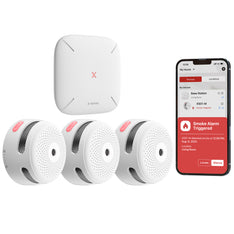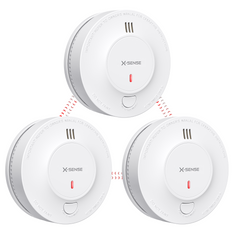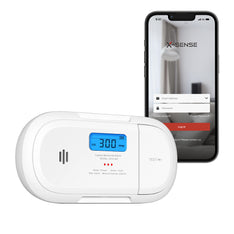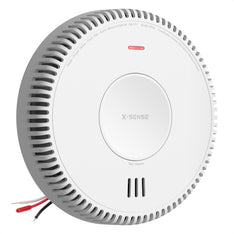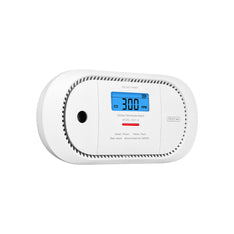What Carbon Monoxide Levels Will Sound the Alarm
Thu, Apr 16, 2020
Exposure to Carbon Monoxide can present a life-threatening situation for individuals, especially when it is for a long period. There are different Carbon Monoxide Levels that you need to understand before symptoms of poisoning appear. As you read further below, we will explain the level of CO and how to prevent CO poisoning when such situations occur. You must be aware of these conditions so that you can act upon it accordingly. At the end of the day, the best solution can only be addressed by having the right knowledge.
1. What is Carbon Monoxide (CO) and How is it Produced
Carbon Monoxide is poisonous gas particles that can exist in burning fossil fuels such as wood, kerosene, natural gas, charcoal, and many more. The presence of CO in the air tends to be inhaled. And with this matter in our body, it can inhibit blood cells to carry oxygen.
We do not need to look too far when we think about the presence of Carbon Monoxide. There is a significant number in statistics that relate CO poisoning with consumer products such as gas stoves, vehicles, lawnmowers, clothes dryer and more.

2. The Levels Carbon Monoxide Will Set Off Your Alarm
Carbon Monoxide Alarms work by measuring the amount of CO that is present in the air. When that measure is reached, it causes the alarm to trigger. Below, we discuss the range of exposure to carbon monoxide.
Low: : A carbon monoxide concentration of 50 PPM below is still considered a low-level risk exposure
Medium: A carbon monoxide concentration of 51 PPM to 100 PPM is considered medium-level risk exposure
High: A carbon monoxide concentration of above 101 PPM is considered high-level exposure if there are no symptoms of poisoning yet.
Dangerous: But if there are already symptoms of poisoning, it is already considered a dangerous level. This is because the carbon monoxide concentration is above 101 PPM and have a disturbing impact already.
Certain carbon concentration levels are being monitored which would trigger your alarm:
10 hours Response Time: With 40PPM of carbon concentration, your alarm should sound off at the half-way mark of 10 hours
8 hours Response Time: With 50PPM of carbon concentration, your alarm should sound off at the half-way mark of 8 hours
Between 1-4 hours Response Time: With 70PPM of carbon concentration, your alarm should sound off at the half-way mark of the time
Between 10-50 minutes Response Time: With 150PPM of carbon concentration, your alarm should sound off at the half-way mark of the time
Between 4-15 minutes Response Time: With 400PPM of carbon concentration, your alarm should sound off at the half-way mark of the time
The Symptoms of Carbon Monoxide Levels: As soon as you suspect or experience symptoms of carbon monoxide poisoning, you should take the following measures. Go out for ventilation and call your local police hotline.
50 PPM: At 50 PPM, there should not be any symptoms for healthy individuals. The allowed maximum CO exposure is 8-hours. Beyond this, more prominent symptoms could arise.
200 PPM: At 200 PPM, you may already experience mild headaches, nausea, weakness, and dizziness after 2-3 hours.
400 PPM: At 400 PPM, you may already experience major frontal headaches within 1-2 hours which could put you in a critical condition
800 PPM: At 800 PPM, you may already have convulsions, dizziness, and nausea in 45 minutes. This could render you unconscious in 2 hours. Prolonged exposure within 2-3 hours could lead to death.
1,600 PPM: At 1,600 PPM, you may already experience severe headaches, vomiting/nausea, and dizziness in 20 minutes. Prolonged exposure for about an hour could lead to death.
3. How to Prevent Carbon Monoxide Poisoning
Here are a few measures that you can do to prevent Carbon Monoxide poisoning:
- Appliances should be in good condition and are operated appropriately
- Heating systems in the area should be serviced and checked regularly
- Hire a professional when fuel-powered appliances need service maintenance
- Never leave a gasoline-powered tool running without supervision
- If you need to operate fuel-burning appliances, make sure it is done with an open-air
- Invest in a CO detector and install them at appropriate areas
- Propane ovens should not be covered with aluminum foils so that it will not block air combustion
- Make sure that heating vents are cleared from debris or lodged dirt
Carbon Monoxide Alarms are built to prevent life-threatening conditions from happening. It has continually been recommended by legal authorities to install such devices to elevate safety standards for your home. When acquiring safety devices, it is always good to find a trusted brand that has proven to be effective.
X-Sense is one of the market-leading providers for ultimate home safety. They continue a reputation that is highly trusted by consumers in over 48 countries.
